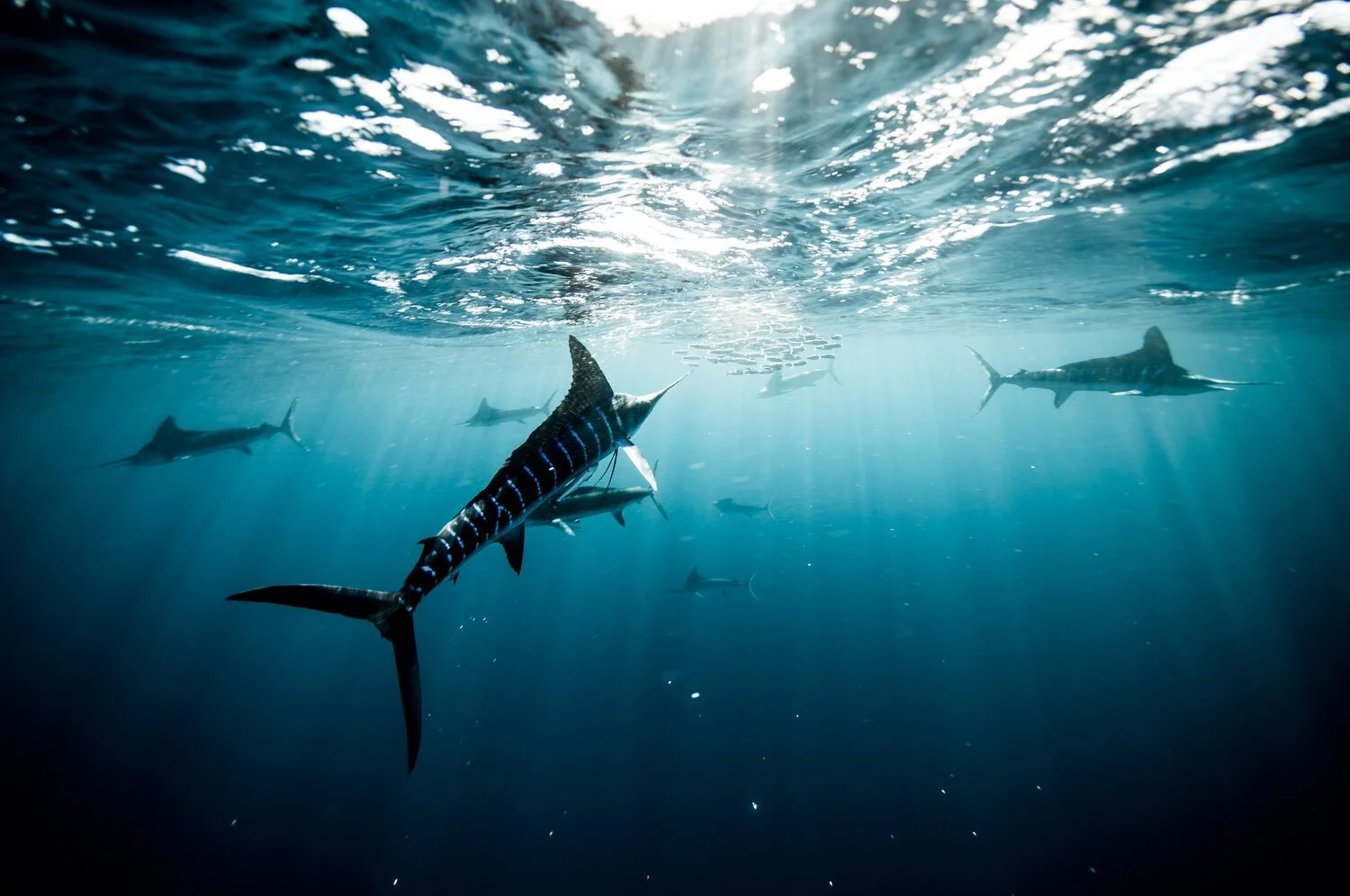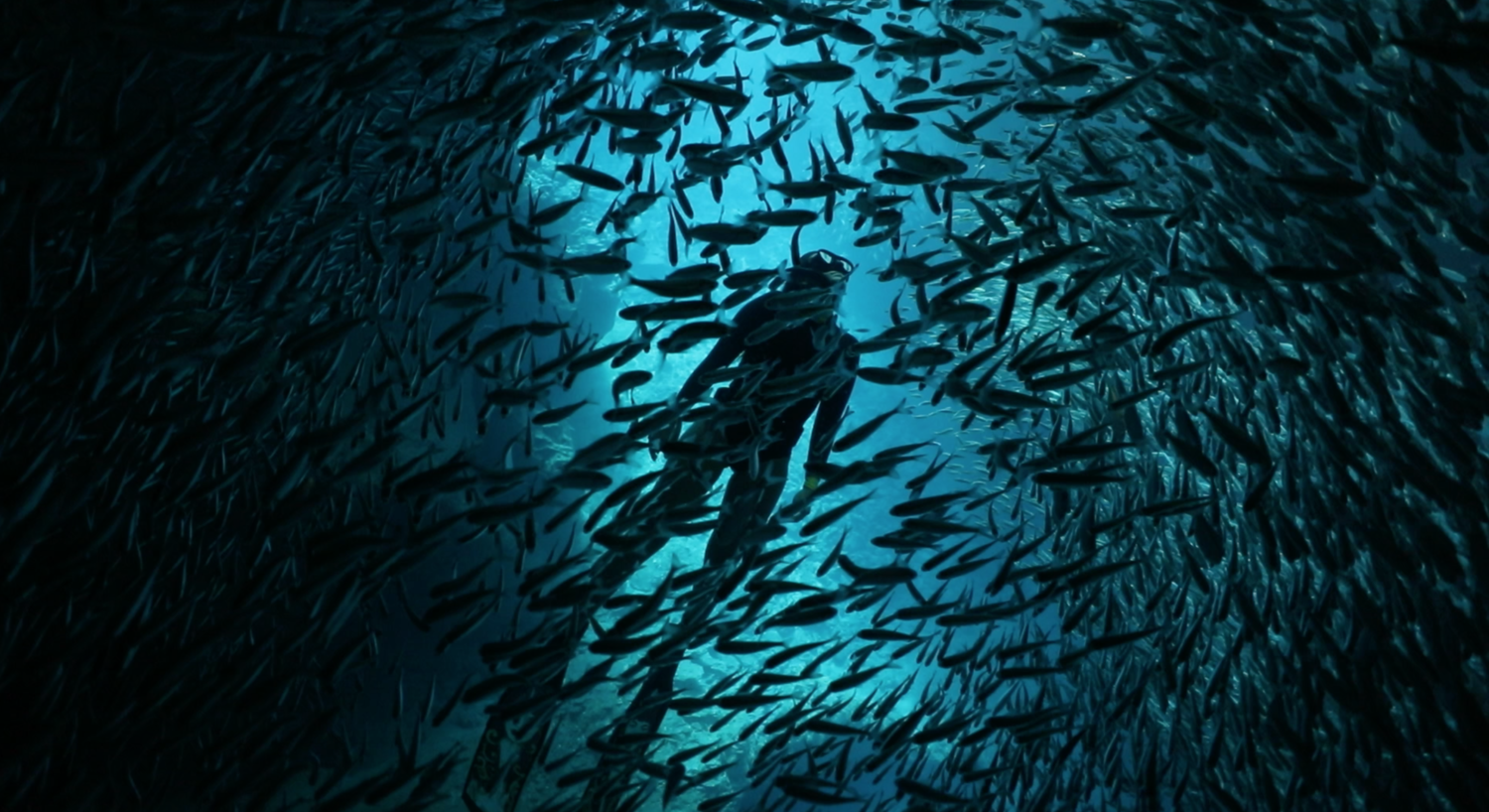Striped Marlin vs. Sardines: Diving into Baja’s Annual Sardine Run
Photographer: Perrin James
Mass animal gatherings are some of the most sought-after wildlife experiences around the world. From the great wildebeest migration across the Serengeti-Masai Mara to the monarch butterflies in North American who take to the skies in search of warmer wintering grounds. Yet, one event that often escapes global fanfare is the annual movement of sardines along the coasts of Baja California, Mexico.
Hidden away towards the southernmost end of Mexico’s Baja peninsula, far from the densely packed resorts and cities of the mainland, lies Magdalena Bay. Sheltered from the Pacific Ocean by two uninhabited islands it is one of Mexico’s most magnificent and ecologically rich coastal habitats with wildlife flourishing due to its unique geography. Magdelena Bay is located at the meeting point of two significant Eastern Pacific Ocean current systems; cooler currents extending downward from Alaska and warmer current systems moving upward from the Tropics. This confluence of north-south water movement creates fluctuations in ocean temperatures unique to the region which are also thought to be a primary contributor to its unparalleled biodiversity. This vortex of ocean currents facilitates the conditions for huge upwellings of nutrients from the deeper zones of the ocean and results in explosions of phytoplankton into the ecosystem. This attracts organisms from all tiers of the food chain to congregate in Magdalena Bay due to the abundance of food. One such species that has become paramount to the overall ecology and economy of the bay is the common sardine.
Photographer: Karim Iliya
Every October through December the bay welcomes sardines in massive numbers, drawing the attention of both animals and humans alike.
Schools of sardines gather off the coastline and attract predator species from far and wide such as striped marlin, dolphins, sea lions, whales, and a variety of other pelagic fish and seabirds. The opportunity to dive into the water and witness such a variety of marine life congregating at once is to genuinely see the natural order of life in the animal kingdom being staged in one oceanic arena.
Hungry predators will circle the sardines at depth and drive them towards the surface where they are the most vulnerable. Perceptive onlookers can be signalled to the location of a feeding event as seabirds begin to circle and the sardines, swimming just under the surface in tightly packed bait balls, cause the water to ripple and splash. Below the waterline is an incredible showcase of mother nature as the sardines utilize their incredible sensitivity to changes in water pressure around them to evade being eaten. They act in harmony, forming fluid, glistening masses that undulate and maneuver as one in response to the predators around them. Marlin barrel through them, seabirds dive in from above and sea lions attack at the fringes to pick off fish that have strayed from the school. Before long all that remains are scattered fish scales caught in the sunlight. This short-lived concentration of marine predation is truly an ecological marvel, one that belongs to this spectacular corner of the world and is a must-see for the adventurous soul.


